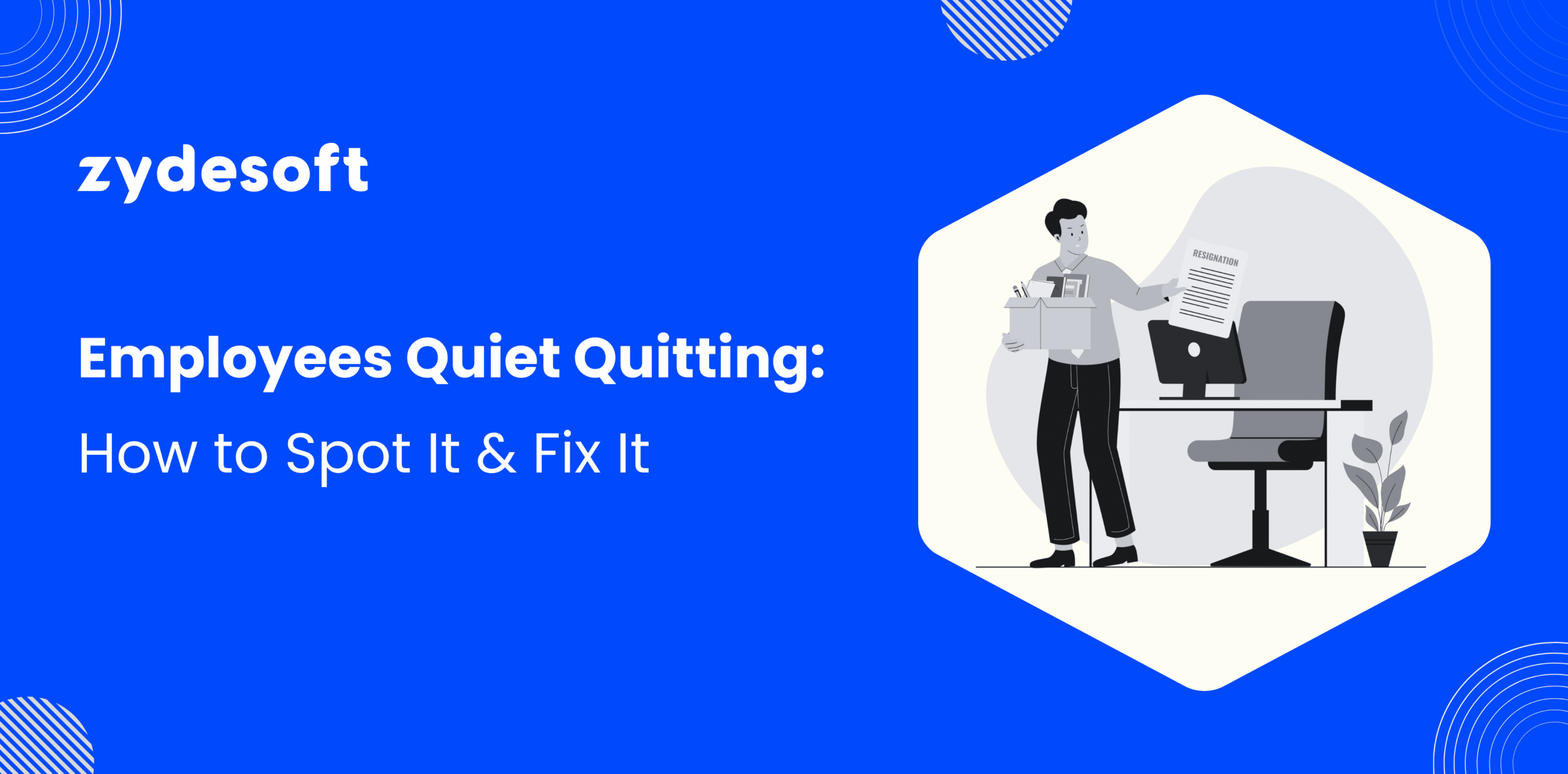
If you’re running a company in 2025, you’ve likely asked yourself: “Is everyone really here with me, or are some just going through the motions?” You might not see dramatic resignations, but look closer, and you’ll find a quieter exodus underway.
It’s called employees quiet quitting—but it has nothing to do with walking out the door.
And if you don’t spot it early, your business could bleed innovation, performance, and morale before you even realize what’s happening.
It was the end of Q2 when Olivia—Head of Marketing at a fast-growing SaaS startup—started to sense something was off.
Team meetings had become oddly… silent. The Slack channels, famous for memes and emojis, felt like ghost towns. When she asked for volunteers to lead a new product launch, she was met with awkward silence.
Worse, deadlines started to slip. Then came the most dreaded line on every manager’s radar:
“I’m just focusing on what’s on my plate right now.”
After some digging, Olivia realized she wasn’t alone: 59% of American employees say they’re not engaged at work, according to Gallup’s 2023 State of the Global Workplace report (source). Around 18% are “actively disengaged,” costing businesses up to $1.8 trillion in lost productivity every year.
Employees quiet quitting isn’t just a TikTok trend. It’s a canary in the coal mine for workplace satisfaction—and it’s incredibly common.
What is a quiet quitting, exactly? It’s not about employees physically resigning. As HR expert Josh Bersin puts it:
“It’s about quitting on the idea of going above and beyond.”
Instead of striving for innovation, these employees lodge themselves into the safe, middle lane. According to Microsoft’s Work Trend Index, 54% of employees say they feel “overworked”—a precursor to disengagement and quiet quitting.
These team members still do the minimum required. They answer emails. They deliver projects sometime near the deadline. But the spark that leads to growth, creativity, and bold new ideas? Gone.
There are clear, visible patterns if you know where to look:

As one project manager put it:
“It’s like they’re present, but not really here. Their energy is somewhere else.”
Your team deserves better than quiet quitters.
Ready to scale with engaged IT pros? 👉 Let’s talk
The stats paint a clear picture:
But beneath the data lies something more human:
Employees want to feel seen, valued, and trusted.
No one sets out to do less. The secret to re-engaging employees quiet quitting isn’t in mandating more all-hands meetings or instituting arbitrary check-ins. It’s in making your team feel essential again.
Here’s what works—backed by research and field-tested by high-performing teams:
Gallup finds managers who hold weekly one-on-ones halve the risk of employee disengagement versus those who don’t.
“Even a fifteen-minute check-in shows you care,” says Raj Patel, HR Director at a Fortune 500 firm.
“People aren’t robots. They need connection.”
Fewer than one in five employees say they feel recognized for their work. Research shows that frequent appreciation can significantly boost engagement (Workhuman, 2023).
Unclear expectations and unmanageable workloads are frequently cited as major drivers of disengagement (Harvard Business Review, 2022).
The majority of professionals say flexible hours would boost their engagement (Deloitte, 2023). But flexibility isn’t just remote work—it’s autonomy.
Only 1 in 3 employees say they have someone at work who encourages their development (Gallup, 2023).
Mental health resources, days when cameras must stay off, enforced boundaries—all signal that you truly care.
Employees at organizations with strong mental health programs are significantly more likely to feel engaged (Mind Share Partners, 2021).
Spot signs of quiet quitting but can’t afford delivery delays?
Zydesoft’s IT staff augmentation gives you skilled, motivated developers—fast. Start here
Let’s circle back to Olivia.
After recognizing the warning signs, she piloted an “engagement reboot”:
Six months later?
Attrition dropped by 30%. Team survey scores on “feeling valued” jumped by 24%. More importantly, meetings buzzed again.
You don’t have to fear employees quiet quitting—if you read the signs, understand the driver, and commit to meaningful, flexible, human-centered solutions.
Because in a world where talent is everything, the difference between a team that’s checked out and one that’s all in could be the difference between your next big win and a costly, invisible defeat.
Disengaged team?
Let’s plug in top-tier IT talent before delivery slips. Book a consult